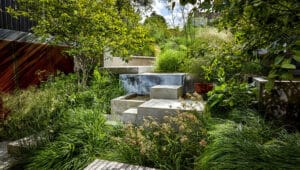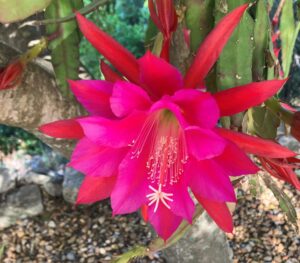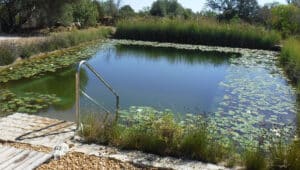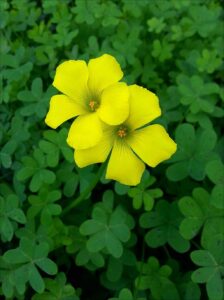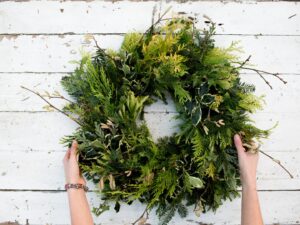
I DO NOT mean this disparagingly, but if there had to be a standard garden, seen right around the Mediterranean, it would have a lawn with a palm tree in the centre, and a bouganvillea growing up the house. With these three features, there are three things to watch out for where fire safety is concerned.
1st Your lawn
As I have stated in Gardening with Fire, your lawn is a mixed blessing as it can quickly turn from a relatively low fuel area near to your home, where a fire can be brought under control, to the complete opposite in a very short space of time. The key is in the state of the grass.
If there is a fire nearby, using your hose or sprinklers can keep the lawn well irrigated, which makes it more difficult for sparks to ignite, but nothing spreads fire faster than dried grass. So, if you are evacuated, or you are not at home when a fire reaches your garden, this could spell disaster, as the radiant heat from an approaching fire can dry grass rapidly, making tinder for any sparks that land. The danger then is that the lawn will spread the fire to other areas of the garden, with higher fuel densities, or even to your home.
If you live in a high risk area, try to make sure that the lawn does not come right up to your home. If you are evacuated, set sprinklers to run on an automatic timer while you are away. Do not waste water by leaving them on, but set the timer to irrigate in periodic bursts.
2nd Your beautiful palm
All palms contain flammable chemicals, but before you reach for the chainsaw, there is a lot you can do to lessen the risk by carrying out general maintenance on your tree. I recently saw palms whose trunks were badly burnt, but whose crowns had survived as the lower branches had been removed.
Remove all dead fronds and those that are yellowing, they will lessen the fuel load and promote healthy new growth. Try to make sure that the fronds do not overhang on the house itself, especially the roof.
If possible, do not have fronds touching or very near to the ground. If this is unavoidable with your particular palm, try to maintain a clear area around the tree, or plant under it with fire-retardant ground covers (for a list of suitable plants, see Gardening with Fire).
3rd The climber
While it is risky to grow climbers up your house in a high risk area, I am not about to suggest that anyone should cut theirs down! Just remember: keep it away from your roof and from directly around doors and windows – this will instantly make your home a bit safer.
But it’s not all doom and gloom around the garden. Next week we will cool off with your pool and other water features – and how they fit into a fire safe garden.
By Cath Wells


